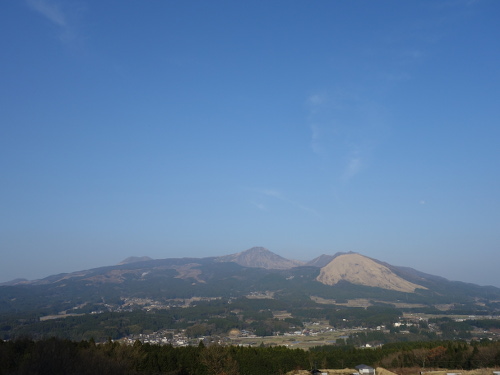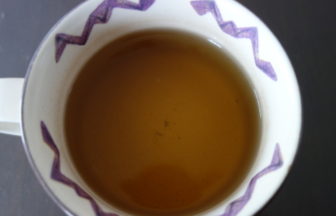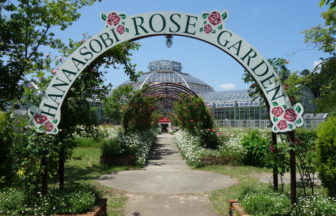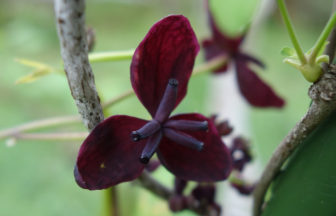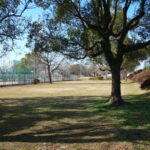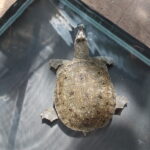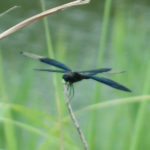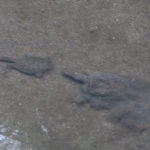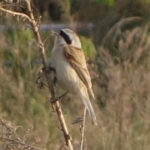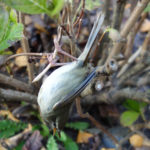Summary of annual events
(Japanese name) |
|
|---|---|
| The New Year (しょうがつ、正月) |
For the Japanese, The New Year is one of the most important holidays. Most Japanese don’t work at least the first three days of the New Year. Many schools and companies are closed for one week or so during the season. |
| Kadomatsu (かどまつ、門松) |
kadomatsu are composed of a pair of pine decorations placed in front of the gates of a house from January 1st for one week. The period is known as Matsunouchi. |
| Shimekazari (しめ飾り) |
Japanese decorate the entrance of their house with shimekazari during the New Year’s season. This is to ward off evil spirits. Shimekazari is assembly of shimenawa which is made of rice straw and bitter oranges, ferns and lobsters. When the New Year’s period is over, all these assembly are taken to shrine and burned. |
| Ha-tsu-mo-de (First visit to the Shinto Shrine) (はつもうで、初詣) |
Japanese people visit a Shinto shrine during the first three days of January to make traditional New Year’s wishes for health and happiness. |
| Osechi-Ryori (おせちりょうり、おせち料理) |
Osechi-Ryori are specially parepared New Year’s dishes to eat during the first three days. During that period, housewives don’t have to cook and can take rest. |
| Kagamimochi (かがみもち、鏡餅) |
Kagamimochi are round and flat rice cakes. A smaller mochi is placed on top of a larger mochi. Kagamimochi is placed in the Tokonoma and Shinto altar. We eat them on January 11th. This event is called Kagamibiraki. |
| Hatsuyume (First Dream of the Year) (はつゆめ、初夢) |
The dreams that occur on the first night of the year (January 2nd) are referred to as Hatsuyume. Some Japanese judge their fortunes for the following year by the dreams. The best three auspicious dreams are said to be Mt. Fuji, a hawk, and an eggplant. (I-chi-fu-ji, ni-ta-ka, san-na-su-bi) |
| Se-i-jin-no-hi (Coming-of-Age Day) (せいじんのひ、成人の日) |
Coming-of-Age Day is on the second Monday of January from the year 2000. Until 1999, January 15th used to be Coming-of-Age Day and the government changed this holiday so that we can have a long weekend. We call such Mondays “Happy Monday.” |
| Se-tsu-bun (Setsubun) (せつぶん、節分) |
Setsubun literally means the border of two seasons. Japanese people celebrate Setsubun on the 3rd or 4th of February. That day is the last day of the winter. We do Mamemaki, that is, throwing beans at home, saying “O-ni-wa-so-to, Fu-ku-wa-u-chi”. This means “Fortune in, devils out.” When the throwing finshed, everybody eats the same number of beans as his/her age and wish for good health. Bean is “Mame” in Japanese. |
| Ken-ko-ku-ki-nen-bi (National Foundation Day) (けんこくきねんび、建国記念日) |
February 11th is celebrated as National Foundation Day which was designated a national holiday in 1967. |
| Hi-na-ma-tsu-ri (Doll’s Festival) (ひなまつり、ひな祭り) |
Families with girls celebrate March 3rd as a day of wishing for girls’ growth and happiness. It originally began in the Edo period and is reffered to as Hinamatsuri (Doll’s Festival). Families with girls display dolls of emperor, empress, servants, furniture, etc., on a five or seven-tiered stand, just like red stairway with 5 or 7 steps. They are, of course, miniatures. |
| Shun-bun-no-hi (Vernal Equinox Day [Spring Equinox Day]) (しゅんぶんのひ、春分の日) |
Shun-bun-no-hi [Shun-bun] is when the sun reaches the vernal equinox, thereby day and night are of equal length. It is usually around March 21st. |
| Ha-na-mi (Cherry Blossom Viewing) (はなみ、花見) |
From the end of March to the beginning of April, Japanese go out to admire the cherry blossoms in full bloom. We spread mats under the cherry cherry trees on the ground and have parties with our family, friends, or co-workers. |
| Showa-no-Hi, Mi-do-ri-no-Hi (Showa no Hi, Greenery Day) (しょうわのひ、昭和の日、みどりのひ、みどりの日) |
Showa Tennou (Showa Emperor) was born on April 29th. Therefore, Showa no Hi is a birthday of Showa Tennou. Until his death in 1989, it was called Tennou Tan-jyo-bi. After his heath, the government decided to continue celebrating this day as a national holiday called “Midori No Hi”. In 2007, Midori No Hi moved to May 4th, while April 29th was designated as “Showa No Hi”, the memorial day of “Showa” era. |
| Golden Week (ごーるでんうぃーく、ゴールデンウィーク) |
The period from April 29th to May 5th is referred to as Golden Week in Japan. This period includes four national holidays. Including pay holidays and Saturday and Sunday, many Japanese have more than a week up to around ten days of holidays at this time. |
| Ken-po-ki-nen-bi (Constitution Memorial Day) (けんぽうきねんび、憲法記念日) |
The present Constitution of Japan was enacted on May 3rd, 1947. To commemorate it, this day was designated a national holiday called Kenpo Kinenbi (Constitution Memorial Day). |
| Ko-do-mo-no-hi (Children’s Day) (こどものひ、子供の日) |
Families of Samurai in the Edo period began celebrating May 5th as the day for boys. Families with boys hoist carp-shaped streamers called Koinobori that symbolize strength and success in life. Nowadays, Kodomono hi has become a national holiday to celebrate the growth of all the children. |
| Ta-u-e (Rice Planting) (たうえ、田植え) |
Farmers transplant rice seedlings from their nurseries to rice paddies. This process is called Taue. |
| Ta-na-ba-ta (The Star Festival) (たなばた、七夕) |
Tanabata (The Star Festival) is the only day when two lovers (stars) separated by the Milky Way can see each other every year. |
| Bon (ぼん、盆) |
Bon is an annual Buddhist event. It is from 13th to 16th of July or August. It is said that the spirits of their ancestors return during this period. Therefore, they go to clean family graves before then. |
| Shusen-Kinenbi (しゅうせんきねんび、終戦記念日) |
August 15th is the day when Japan surrendered to the Allied forces in 1945 and the Second World War came to an end. |
| Tsu-ki-mi (Moon Viewing) (つきみ、月見) |
August 15th is the day when Japanese people view the moon. Japanese people enjoy the full moon and offer it moon viewing dumplings and Japanese pampas grass (Miscanthus sinensis). |
| Ke-i-ro-no-hi (Respect-for-the-Aged Day) (けいろうのひ、敬老の日) |
Ke-i-ro-no-hi is on the third Monday of September.It is Japanese national holiday when people honor and show respect to the aged. |
| Shu-bun-no-hi (Autumnal Equinox Day) (しゅうぶんのひ、秋分の日) |
On or around September 23rd is the national holiday called Shubun no hi. Shubun no hi falls during the week of the autumn equinox just like Shunbun no hi in March. Shubun no hi is the day when the length of night and day is almost equal. |
| Ta-i-i-ku-no-hi (Sports Day, Health-Sports Day) (たいいくのひ、体育の日) |
Taiiku no hi, or Health-Sports Day is on the second Monday of October. This day is a national holiday and was designated in 1966. |
| Bun-ka-no-hi (Culture Day) (ぶんかのひ、文化の日) |
November 3rd was originally celebrated as Meiji Emperor’s birthday. The Japanese Constitution was also proclaimed on this day. Therefore, Culture day was established on November 3rd to commemorate these two events. |
| Shi-chi-go-san (Shichi Go San [The Seven-Five-Three Festival]) (しちごさん、七五三) |
When children reached seven years old (for girls), five years old (for boys), or three years old (for girls and boys), they are taken to a Shinto shrine in the neighborhood by parents or grandparents on November 15th, to celebrate children’s growth. Nowadays, three years old girls only are celebrated. |
| Kin-ro-kan-sha-no-hi (Labor Thanksgiving Day) (きんろうかんしゃのひ、勤労感謝の日) |
November 23rd is Labor Thanksgiving Day. This day was established as a national holiday to stress the importance of labor in people’s mind. |
| Ten-no-tan-jyo-bi (Labor Thanksgiving Day) (てんのうたんじょうび、天皇誕生日) |
The present emperor, Akihito, was born on December 23rd, 1933. This day has been a national holiday since the late emperor’s death in 1989. On this day, the Emperor and his family make a personal appearance on the second-floor balcony of the Kokyo (Imperial Palace) to greet gathered people. |
| O-mi-so-ka (Ohmisika [New Year’s Eve) (おおみそか、大晦日) |
Ohmisoka is the last day of the year. By this day, most Japanese are already on their New Year’s holidays. They try to finish all their house cleaning, shopping, and preparation of Osechi Ryori during the daytime. At midnight, many people eat buckwheat noodle referred to as “Soba” and wish for health and longevity in the year to come. |

